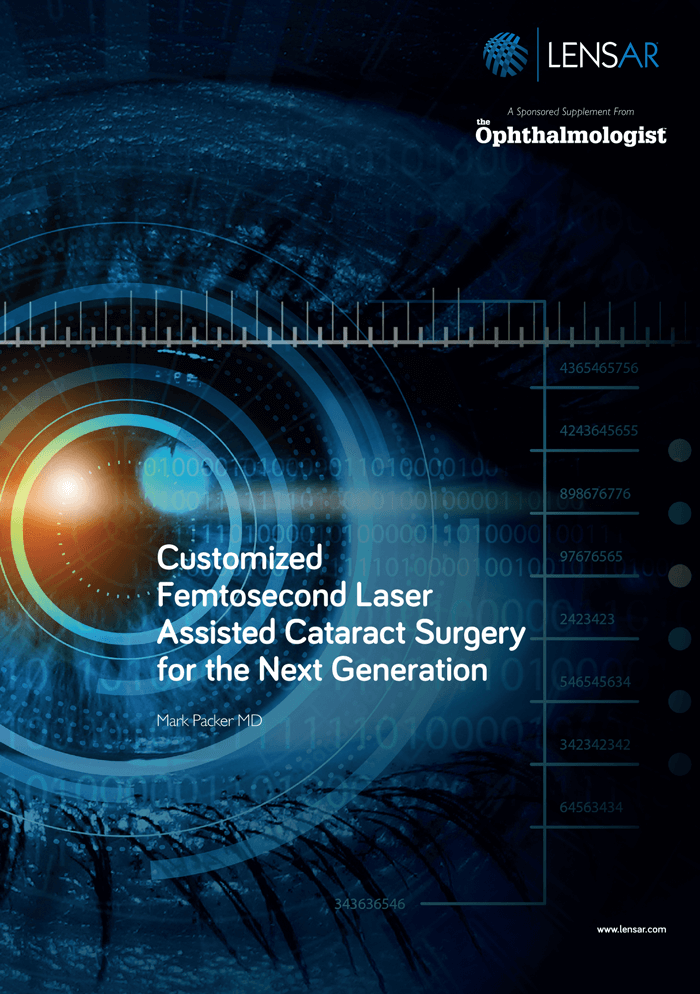
Next generation intraocular lenses for cataract and lens-based refractive surgery require increasingly customized and precise surgical procedures to ensure their safety, accuracy and performance. For example, capsulotomy size, shape and location have a significant impact on the outcomes of multifocal and extended depth of focus IOLs (1), and corneal incision size, structure and location affect surgically induced astigmatism (2). In addition, the use of excessive intraocular energy for lens extraction has implications for the speed and stability of postoperative recovery (3). In the near future, the emergence of accommodative IOLs will place further demands on the requirements for customized surgery. To address these increasing requirements for customization and precision, the LENSAR Laser System delivers state-of-the-art femtosecond laser assisted cataract surgery (FLACS) with advanced imaging and guidance, allowing superior outcomes and truly customized surgery to match patients’ expectations for high quality vision at all distances.
References
- Chen X, Gu X, Wang W, et al. Characteristics and factors associated with intraocular lens tilt and decentration after cataract surgery. J Cataract Refract Surg. 2020;46(8):1126-1131. doi:10.1097/j. jcrs.0000000000000219
- Pereira A, Somani S, Tam ES, Chiu H, Maini R. Comparison of Surgically Induced Astigmatism and Corneal Morphological Features Between Femtosecond Laser and Manual Clear Corneal Incisions. J Refract Surg. 2019;35(12):796-802. doi:10.3928/1081597X-20191024-02
- Krarup T, Ejstrup R, Mortensen A, la Cour M, Holm LM. Comparison of refractive predictability and endothelial cell loss in femtosecond laser-assisted cataract surgery and conventional phaco surgery: prospective randomised trial with 6 months of follow-up. BMJ Open Ophthalmol. 2019;4(1):e000233. Published 2019 Mar 1. doi:10.1136/ bmjophth-2018-000233
